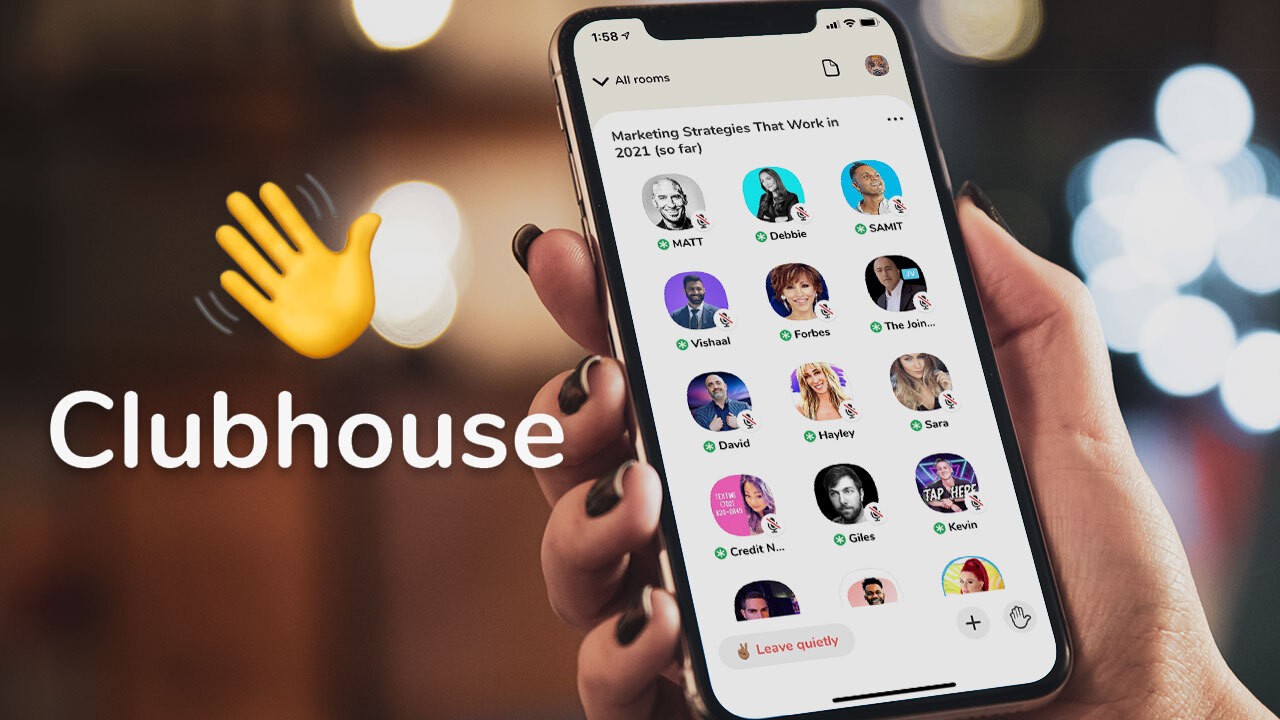You’ve almost certainly heard about Clubhouse. In less than a year, the audio chat room social media platform has grown from 1,500 users (May 2020) and a $100m valuation to 10 million users (February 2021) and a $1bn valuation, solidifying its Unicorn status. Whatever you think of today’s VC valuations, Clubhouse is on a roll.
For those of you old enough to get this reference, Clubhouse is like amateur ham radio. For everyone else, it’s essentially a live podcast with curated, two-way interaction. The premise is, “Interesting people talking about interesting things”. Clubhouse launched with an air of exclusivity— users need to be invited to the app, and the conversations happen live with no recording and no playback. This generates an ephemeral element that adds to the allure. Controversially, it’s only available on iOS— so far.
Clubhouse users increased 500% from January to February 2021, and those numbers should keep climbing. Demand for membership is now so intense that a market for invitations to the app has sprung up on platforms like Reddit, eBay and Craigslist.
For the cynics among us, resisting the urge to label Clubhouse a passing trend or “just another social media platform” can illuminate the model’s possibilities. And new audio formats have the potential to pioneer consumption behaviour, just like Stories have done.
If you’re an entertainment brand or sports team and have your own app, could Clubhouse be signalling a new way to engage with audiences via audio? Possibly.
Establishing a brand presence on Clubhouse is pretty straightforward, and for many, the temptation will be to jump in as quickly as possible. But with Clubhouse’s cult-like following, brands will need to be sensitive to the context and add value, with a tonality and purpose that feels native to the environment.
Building your own audio chatroom experience within your app could have more measurable business positives: extended engagement, loyalty rates and sign-ups. Twitter, for example, has moved quickly and is testing a similar feature called “Spaces”. Most other major social media players have similar versions up their sleeves. By building your own interactive audio experience, could you create a new type of fan forum that drives even further fan engagement? What about monetising it with partnerships or merchandise sales?
But if you’ve thought this through, you’ll have hit the same problem faced by forums, comments and chatrooms for decades: Moderation.
The elephant in the room: Moderation
For high profile properties, the risks associated with free-flowing public communication are concerning. Social networks are finally accepting responsibility for the content on their platforms, but they have vast resources. How do you mitigate nefarious usage and illegal behaviour without hiring a legion of moderators?
As always, there is no silver bullet, but there are approaches you can take— and they all start with accepting that directly copying Clubhouse probably isn’t going to work for your brand.
Deploy full registration and Two-Factor Authentication
The first step is to establish some form of trusted identity. It’s no silver bullet, but using a mobile number to validate a user is a soft deterrent to nefarious usage. Adding a requirement for a validated email address is a strong addition.
Hosted sessions, with banning power
Unlike Clubhouse, which allows anyone to start a room, you can create a limited set of rooms for specific topics. Give one trusted individual control of the room and empower them to ban users permanently. Combined with registration, this means bad actors must re-register, which is time-consuming and could be a deterrent for future bad behaviour.
Introduce listen-only mode and social “status” for speaker rights
Using basic gamification techniques, you can reward individuals for loyalty and give “speaker rights” to people who show up more than, say, three times. In other words, only committed users are allowed to speak throughout the session— everyone else is listen-only.
VIP or Membership Clubs
One approach can be to create an audio chat for superfans who are members of a paid fan club or membership scheme. Paying fans— those whose payment details, addresses and identities are known— behave better because they know you know who they are. Make them sign up to terms and conditions and terminate their membership if they break the rules.
100% controlled mode
When the risk of even momentary issues is too high, you can still create compelling live audio capabilities without inviting the public to participate. For example, celebrity commentaries, or specially cast and curated groups of people having a discussion— with UI features that visualise who is talking and give you additional profile information on the speakers.
Creating an audio-chat room in your digital properties can be an exciting way to engage with fans. Learn more about building interactive experiences that can help you harness the power of real-time engagement.




















